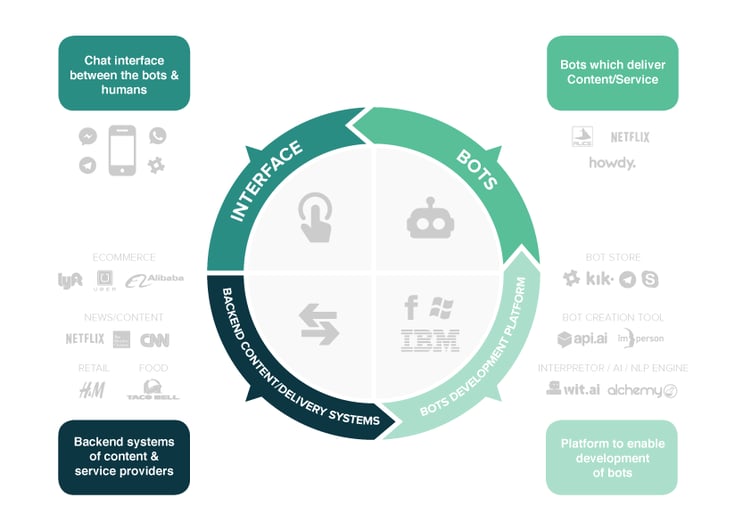France pledges to use force only in legitimate self-defense, that is, in response to a cyber attack that would cross the UN Charter’s Article 51 threshold. This rules out the possibility of a “preventive cyber attack” against a hostile third party. By contrast, strictly preemptive action could in certain circumstances be legal under international law, depending on the scale and effects of the attack. The decision to abide by international law in times of conflict constrains the range of possible responses to cyber attacks with more ambiguous consequences. For example, although the document claims democratic life is an asset of vital importance just like a power grid, even a large hack aimed at disrupting an election would be less likely to trigger a conventional military response than an attack against a key power grid would be. If the threshold for offensive action is not met, France claims it would act under the UN Charter’s Chapter VI, taking economic or political reprisal measures, a stance consistent with America’s response to Russia’s electoral interference in 2016.
Building single source of truth using Serverless and NoSQL
When it comes to large scale data ingestion in Azure, Event Hubs provide a data streaming platform, capable of receiving and capturing millions of events per second. However the customer had enterprise high-value messaging requirements such as transactions, ordering and dead-lettering. Luckily we have such a service at our disposal in Azure Service Bus. We could have easily skipped Service Bus and directly persisted data to the storage, however the queue-based load leveling pattern allows us to decouple ingestion from storage, adds resilience in the form of retries, as well as enables asynchronous processing of ingested data. Instead of directly exposing Service Bus to the source systems, we wanted a REST API with friendly URL. Azure Functions allows us to develop event-driven Serverless applications by providing a multitude of triggers and bindings. All functions have exactly one trigger which defines how the function is invoked. In just few lines below, we were able to create an HTTP trigger function which inserts JSON-serialized product entity to the Service Bus Queue called productsQueue.
Is Your Blockchain Business Doomed?

It’s possible that even an individual’s public Bitcoin address—a string of letters and numbers used to send and receive the digital currency—could be considered personal information. “Encrypted data will often qualify as personal data and not as anonymous data,” the law firm Hogan Lovells said in a recent note. “This means that in most instances the privacy rules will be applicable to at least some of the data involved in blockchain systems.” Some companies may have to redesign their software and buy costly traditional databases to move any personally identifiable information they possess off a blockchain. That would help with compliance, but it could remove some of a blockchain’s benefits. It will be harder to ensure that documents stored outside a blockchain haven’t been tampered with, for example. And moving off a blockchain could be expensive, especially for startups. Maintaining their own databases costs more, and such companies might need to raise funds to build IT infrastructure.
Pain in the bot? Artificial intelligence in banking

This focus is already heating up the development landscape as chatbot technology advances at a rapid clip. Google and Microsoft already offer digital assistants on smartphones, called Google Now and Cortana, respectively, which gain increasingly deep knowledge of their users’ habits and schedules. Amazon sells a stand-alone device called Echo that features Alexa, who can, among other things, play music, read books aloud and help buy items through Amazon. And Siri of course reigns over the Apple universe. According to Gartner, about 38% of American consumers have used virtual-assistant services on their smartphones recently; by the end of 2016 an estimated two-thirds of consumers in developed markets will use them daily. So, all signs point toward an AI-induced change in the way we interact with... well, probably everything. ,,, Although some interesting examples emerged from a recent Mondo hackathon, and some non-bank fintech startups are starting to introduce clever apps
Exploring the Future of Banking
Lately, banks and fintech firms find that they have complementary assets that could result in mutually beneficial relationships. Banks have the market’s trust and a large customer base that fintech firms have had a hard time to replicate. Fintech firms have innovative solutions that banks haven’t been able to develop. Partnerships would be ideal in such a situation. Unfortunately, due to regulatory concerns, most FIs see fintech firms as either vendors, acquisition targets, or investments. True partnerships are few in the industry. That said there are various opportunities. For example, the robo-advisor space in wealth management is ripe for strong collaborations. Traditionally, investing has been kept to the mass affluent market and above. Fintech firms like Betterment, Wealthfront, Robinhood, and Acorns continue to show that the mass market is ready to take advice through automated solutions and PFM assistants powered by AI and algorithms. To be honest, banks aren’t worried by these players. Correctly, many bankers point to the fact that these lenders haven’t gone through a downturn in the economy.
How to use data science to understand customer emotions and decisions

To be clear, computers don't understand emotions, but they can be shown examples around an arbitrary concept and be taught to recognise the weak signals and indicators that identify them. The aim is to give automated systems the ability to listen to and understand the emotional subtext in a dialogue and do so at a level of sophistication and scale that humans can't replicate. If you like, we're attempting to give computers some EQ to go with their IQ. Of course, the natural follow-on to this is that the organisation also must be good at acting on the insights - listening is only half the equation. I like to think about it as putting the 'relationship' back into customer relationship management and we all know that the best relationships are far more than meeting each other's rational needs. ... This data fuels the analyses. Next is the ability to extract emotional meaning from narratives using advanced natural languages tools, ones that don't just categorise conversations or answer questions - this is predominantly the world of AI and Machine Learning.
What you need to know about cryptocurrencies in UAE

On one hand, the Central Bank of the UAE's Regulatory Framework for Stored Values and Electronic Payment Systems indicates very clearly that "all virtual currencies [and any transactions thereof] are prohibited". On the other hand, the UAE and Saudi Arabia have recently made public their plans to implement their own cryptocurrency to be used and regulated in the region. In September 2017, the Dubai Financial Services Authority has issued in a statement addressed to the Dubai International Financial Centre's investors that it did not "regulate these types of product offerings [cryptocurrencies]" whilst declaring them to be "high-risk investments". Today in the UAE, there is no clear vision on this phenomenon. And it is a mere question of definition. UAE central bank governor Mubarak Rashid Khamis Al Mansouri indicated that "these regulations do not cover 'virtual currency', which is defined as any type of digital unit used as a medium of exchange, a unit of account, or a form of stored value. In this context, these regulations do not apply to bitcoin or other cryptocurrencies, currency exchanges, or underlying technology such as blockchain".
Blockchain use cases where IoT and distributed ledger technology meet
In an age where consumers want their goods faster than ever and the pressure for digital supply chains to be more interconnected and efficient is high. With interconnected we don’t mean supply chains as such but the data flows, processes, control mechanisms, myriad stakeholders, processes, actions and interactions (as mentioned in a blockchain smart port case there are over 30 different parties with on average 200 interactions between them just to get a container from one point or the other in shipping). No wonder that global logistics and transportation are among the fastest movers in testing and adopting blockchain technology. It is no different in the intersections of IoT and distributed ledgers from the ecosystem perspective as the Kaleido Insights report depicts it: supply chain is one of five blockchain IoT use case or rather industries/activities where blockchain is seen as the foundation for autonomous products and ecosystem services.
Patterns for Microservice Developer Workflows and Deployment

To improve feature velocity in an organization, you can organize your people as independent, self-sufficient feature teams that own an entire feature from beginning to end. This will improve feature velocity in two ways. First, since the different functions (product, development, QA, and operations) are scoped to a single feature, you can customize the process to that feature area — e.g., your process doesn't need to prioritize stability for a new feature that nobody is using. Second, since all the components needed for that feature are owned by the same team, the communication and coordination necessary to get a feature out the door can happen much more quickly and effectively. When you do this, you end up breaking up that monolithic process that was the gating factor for feature velocity, and you create many smaller processes owned by your independent feature teams. The side effect of this is that these independent teams deliver their features as microservices. The fact that this is a side effect is really important to understand.
Laying a Framework for IoT with Enterprise Architecture

IoT transformation projects are complex and require careful planning and tracking against progress. Having an IoT roadmap will keep you from adding valueless technology to your landscape. Enterprise architects should be in the driver’s seat, and lead when identifying conflicts in requirements between different projects regarding the same applications. Planning and tracking the transformation process can cut down the time of the entire process of successfully deploying the IoT-supported system. Here, enterprise architects can easily track the phase-ins of new applications and retirements of legacy applications, and plan for scenarios of the application landscape to future-proof the organizations’ system. ... With data breaches occurring almost weekly, security is a crucial issue and proves to be a significant challenge for IoT. One of the biggest and most impactful costs of integrating an EA system that supports IoT is the potential security risks to the organization if left exposed.
Quote for the day:
"Tomorrow's leaders will not lead dictating from the front, nor pushing from the back. They will lead from the centre - from the heart" -- Rasheed Ogunlaru

No comments:
Post a Comment